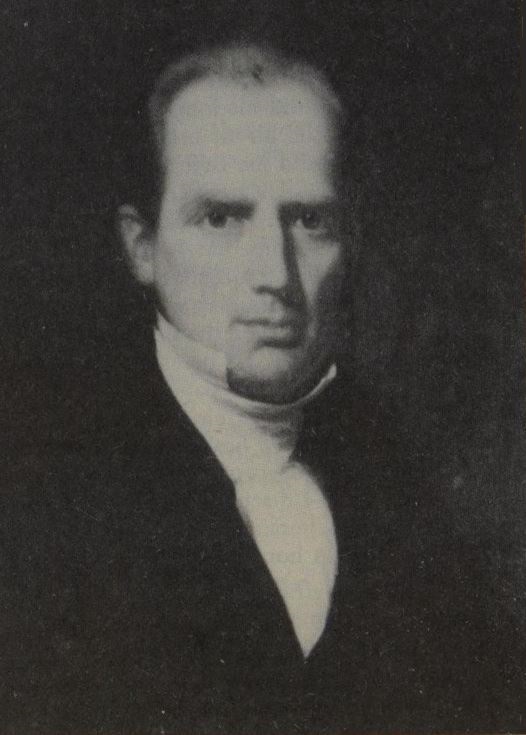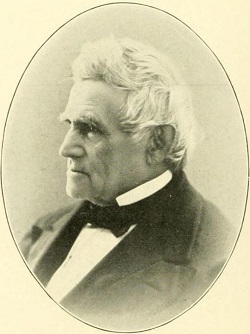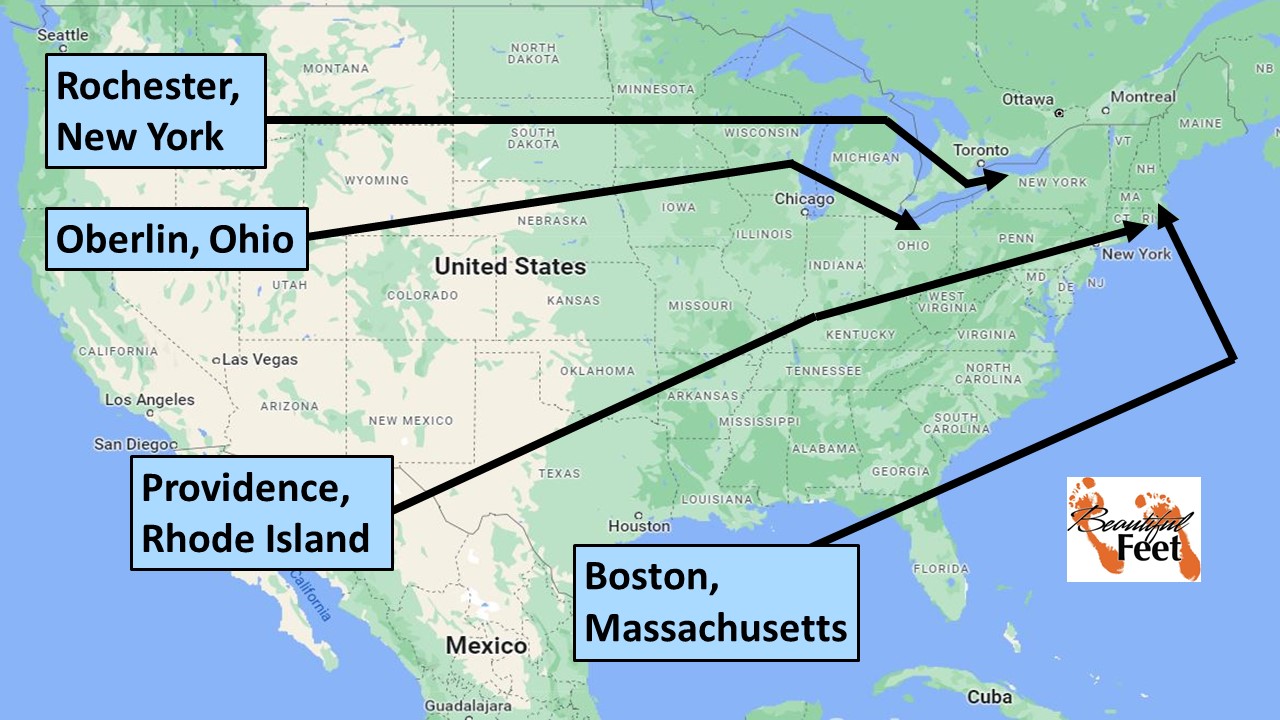1842 Rochester Revival


Charles Grandison Finney – Father of modern revivalism and the leading figure of the Second Great Awakening
Introduction
Charles G. Finney’s (1792-1875) unique methods of evangelism earned him the title of the “father of modern revivalism.” His methods paved the way for other mass-evangelists, like Dwight L. Moody, R. A. Torrey, John W. Chapman, Billy Sunday, and Billy Graham, who adapted and built upon Finney’s methods.
Background Information
With this revival account being one in a sequence of revivals during the life of Charles G. Finney, we recommend reading them in chronological order:
► 1824 Evans Mills German Settlement Revival
► 1824 Antwerp, New York Revival
► 1824 Revival at Perch River and Other Locations
► 1825 Revival in Gouverneur, New York
► 1825 Revival in De Kalb, New York
► 1825 Revival in Western, New York
► 1825 Revival in Rome, New York
► 1826 Revival in Utica, New York
► 1826 Revival in Auburn, New York
► 1826-1827 Revival in Troy, New York
► 1827 New Lebanon & Stephentown Revivals
► 1827-1829 Revival at Wilmington and Philadelphia
► 1829 Reading, Pennsylvania Revival
► 1829 Lancaster, Pennsylvania Revival
► 1829 Columbia, New York Revival
► 1830 New York City Revival
► 1830-1831 Rochester, New York Revival
► 1831 Revivals in Auburn, Buffalo, Providence & Boston
► 1832 New York City Revival
► 1835-1840 Revivals in Oberlin, Ohio
► 1841-1842 Boston & Providence Revivals
From Providence to Rochester
Charles Finney had just finished the 4-month Boston & Providence Revivals and was on his return trip to Oberlin, Ohio, to begin his teaching responsibilities for the spring term at Oberlin College. Passing through Rochester, New York, on his way to Oberlin, having arrived on February 12, 1842, he was invited to preach a couple of sermons, and it turned into a 2-month revival in that city.

The Invitation to Stay in Rochester
The invitation for Finney to stay in Rochester came from the renowned Judge Addison Gardiner, an unconverted man. Several ministers also visited Finney while he was taking a day’s rest in Rochester, adding to Gardiner’s request for him to stay and preach a few sermons.
Finney agreed to this request, and his sermons only generated more excitement and importunity in the requests for him to stay and preach a series of meetings. Finney then agreed to hold services at Bethel Free Church, later renamed Central Presbyterian Church.
Not long after starting the meetings, this church proved to be too small, and the services were relocated to another larger church, pastored by Jedediah Burchard.
Preaching to Lawyers
While the services at Bethel Free Church (on Washington Street) were in progress, Judge Addison Gardiner united the lawyers in the city and presented Finney with a written request to preach a series of sermons specifically for those in the law profession. Along with Gardiner, many of these lawyers had a “half skeptical state of mind,” and many of them were still unconverted. Even so, they were open to what Finney had to say.
Revival Services at Two Locations
When Finney started his sermons for lawyers, with him describing them as being “the more sober and intelligent class,” Rev. Jedediah Burchard was holding services for “the more excitable class of the community” at another location.
The meetings were filled to capacity, so much so that if one didn’t arrive early a person wouldn’t be able to find a seat.

Judge Addison Gardiner
The Conversion of Judge Addison Gardiner, and Its Effect
As Finney continued his series of sermons from night to night, the interest grew. His nine evenings, with sermons lasting around 2 hours, was coordinated to lay out his case before these lawyers. He did not rush to present an invitation for those assembled to convert to Christ; he allowed his evidence and the work of the Holy Spirit to make its impression.
During the 1831-1832 Rochester Revival, when Gardiner was present in the services, he was offended by Finney’s habit of inviting those who were convicted of their sins to come to the front of the sanctuary and acknowledge their anxiousness publicly, by taking a seat reserved for them, which was a row of seats referred to as the anxious seat.
On a given night, during one of the sermons to the lawyers, toward the end of the sermon, Gardiner came up behind Finney, and asked:
Mr. Finney, won’t you pray for me by name? and I will take the anxious seat!
Even though Finney had not made mention of the anxious seat, Gardiner knew its implications, and the impact it would have if he took a seat there.
Finney then publicly announced what Gardiner had said, and of that moment he wrote:
It produced a wonderful shock. There was a great rush of feeling in every part of the house. Many held down their heads and wept; others seemed to be engaged in earnest prayer. He crowded around in front of the pulpit, and knelt immediately down. The lawyers arose almost en masse, and crowded into the aisles, and crowded around the open space in front, wherever they could get a place to kneel, and as many knelt around Judge Gardiner as could.
Finney had not as yet given a public invitation to accept Christ’s offer of salvation, but he took the opportunity to do so at that time.
I then publicly requested that any who were prepared to renounce their sins and give their hearts to God, and to accept Christ and his salvation, should come forward,—that they should get into the aisles, or wherever they could, and kneel down. There was a mighty movement.
One report indicated that 350 were converted at this time.
Recorded in the “Diary in Rochester Historical Society” we read:
There has been a wonderful outpouring of God’s Holy Spirit and such a precious time as we have had no one scarce ever saw or heard since the Day of Pentecost. Hundreds have professed.
Finney remained in Rochester two months, and it resulted in a movement “among the principal citizens of Rochester.” He said that the number of special cases of conversions, like Gardiner’s, if recorded, would fill a large book.
Results of the Revival
► The number of conversions, by April 4, 1842, was said to have exceeded 2,000. “Men of all ranks, as well as females and children, are included in the number.”
► Each evening the meetings were filled with converts and those who were seeking Christ and His salvation.
► Several of the lawyers that were converted during the revival gave up their profession and became ministers.
► Universalism and Unitarianism beliefs were severely dismantled through this and other revivals, and the churches promoting those beliefs suffered greatly.
Finney Revival Account List
Access all accounts of Finney’s revivals using this link.
Sources
► Chapter XXVI Rochester Revival: The Memoirs of Charles G. Finney by Charles G. Finney
► The Memoirs of Charles G. Finney: The Complete Restored Text by Charles G. Finney
► Charles G. Finney by Wikipedia
► Charles Grandison Finney & the Second Phase of the Second Great Awakening by Christian History Institute
► Great Revivals and the Great Republic by Warren Candler
► Man of Like Passions: The Life Story of Charles Grandison Finney by Richard E. Day
► Memoirs of Revivals of Religion by Charles G. Finney
Return to List of Revival Stories
Chet & Phyllis Swearingen:
Office: (260) 920-8248
romans1015@outlook.com
Beautiful Feet
P.O. Box 915
Auburn, IN 46706


